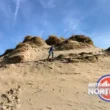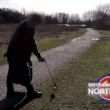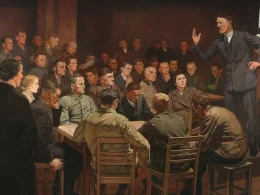Aln-wick from the Anglo-Saxon which means ‘a farm or a trading place on the Aln’.
The first established references to a settlement at the site of what today is Alnwick came in the period around 600 AD. There are no references to an earlier settlement here during the Iron Age or during the Roman occupation period.
The region was taken over by the northern Angles and fell into the early Anglian kingdom of Bernicia until the year 605 AD when King Aelfrith annexed the neighbouring kingdom of Deira to establish the larger kingdom of Northumbria. The kingdom later passed to Earl Siward, a formidable warlord under whom the settlement of Aln-wick became noted, Siward died in 1055 and did not live to see the Norman Conquest.
After the Norman Conquest in 1066 and the unsettled period of Norman settlement, the unrest and rebellions against Norman control and the ‘Harrying of the North’, Alnwick passed under the control of the Norman overlord Ivo De Vesci.
In keeping with much of North-East England during the medieval period, the Alnwick area was subjected to frequent raids by Scottish warbands and Scottish kings frequently sought to take over this part of Northumbria. This resulted in the first Battle of Alnwick on November 13th 1093. The Norman knight Robert de Mowbray defeated and killed King Malcolm III of Scotland along with his son Prince Edward of Scotland.
Following this battle, Ivo De Vesci constructed the first motte and bailey castle at Alnwick, after which De Vesci purchased the castle and surrounding district from the Bishop of Durham. De Vesci also acquired the Barony of Alnwick as part of the same deal.
Conflict continued over the next century and on July 13th 1174 another Scottish incursion was defeated at the second Battle of Alnwick, when King William I of Scotland was captured by the nobleman Ranulf de Glanvill, and the Scottish army put to flight.
A cattle market was granted a royal charter at Alnwick and in 1304 the construction of Alnwick Abbey began. Just five years later the nobleman Henry De Percy took over the district and the Percy family became a prominent dynasty in Northumberland, constructing the Hotspur Tower at Alnwick.
Hulne Priory, was established by the Carmelite religious order within the grounds of Lord Percy’s estate, which today is known as Hulne Park.
In 1377 Henry, the fourth Lord Percy became the Earl of Northumberland and the Percy family became a force in both the military and political affairs of the North-East, especially during the Wars of the Roses. Conflict with Scotland continued to affect Alnwick, in 1424 part of the town of Alnwick was raided and burned by a Scottish army. The same disaster struck the town again in 1448 when a Scottish army once again sacked and burned most of Alnwick.
Alnwick never expanded beyond being a market town on the banks of the River Aln, but became an important staging post on the Great North Road as part of the route between London and Edinburgh, which led to a number of coaching inns being established in the town.
Alnwick continued across the centuries to be a focus for the Percy family, especially in connection to the Duke of Northumberland’s estate at Hulne Park.
Alnwick is a White town; the most recent census data gives the population break down as 98.1 % White British and other White nationalities, Asian, black or mixed race make up less than 100 people in a population of less than 12,000.

Resources
Bottom Image: Alexander Kachkaev, CC BY 3.0.
The British Movement welcomes articles for possible inclusion on this site from members and supporters across the North of England. Please remember that we have to operate within the laws of this country – we will not include any content that is against the current laws of the United Kingdom. News reports should be topical and be relevant to the regions covered by this website.












